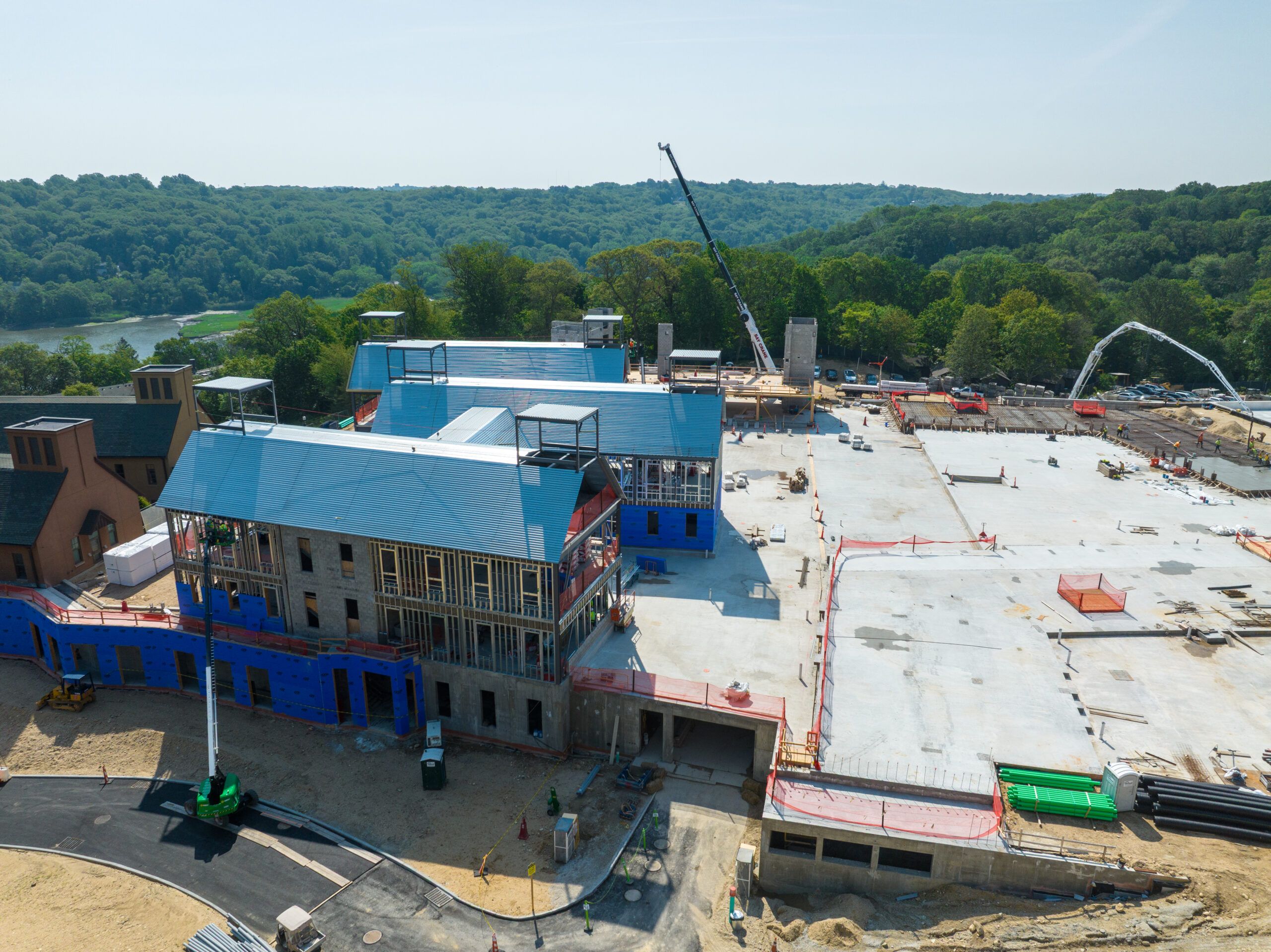Managing water effectively is a big part of eco-friendly construction. One simple and natural way to do this is by using ponds to collect and store rainwater. Ponds help prevent flooding, improve drainage, and even add beauty to a property. They also support local wildlife and keep water cleaner by filtering out pollutants.
How Ponds Help with Water Management
Ponds work by collecting excess rainwater, slowing it down, and allowing it to soak into the ground naturally. This reduces the amount of water that rushes into drains and rivers, which helps prevent flooding and erosion. It also improves water quality since the pond acts as a natural filter, trapping dirt and pollutants before they reach larger water bodies.
As cities and towns grow, roads and buildings replace natural landscapes, making it harder for water to soak into the ground. This increases runoff, leading to drainage problems and water pollution. Adding ponds to urban and residential areas helps restore balance by creating natural areas where water can be managed effectively.
Different Types of Ponds for Stormwater Control
Ponds can be designed in different ways depending on the location and purpose. Here are some common types:
Retention Ponds
These ponds always have water in them and help manage runoff by storing rainwater and releasing it slowly over time. They improve water quality by allowing pollutants to settle before the water moves on. Retention ponds can also be used as decorative features in neighborhoods and business areas.
Detention Basins
Unlike retention ponds, these basins are dry most of the time and only hold water temporarily after it rains. They slow down stormwater and release it gradually to reduce flooding risks. These are often used in parking lots and large developments.
Bioretention Ponds
These are small, shallow ponds filled with plants that help absorb and filter rainwater. They are great for cleaning runoff before it reaches lakes or rivers. Many cities use bioretention ponds in parks and urban areas to keep water clean.
Constructed Wetlands
These artificial wetlands act like natural swamps by using plants and soil to clean stormwater. They provide habitat for birds and other wildlife while also improving water quality.
Why Ponds are a Smart Choice in Construction
Including ponds in a project brings many benefits, such as:
Preventing Flooding
By storing excess rainwater, ponds help reduce pressure on city drainage systems. This lowers the chance of flash floods and water damage to properties.
Keeping Water Clean
Ponds help trap dirt, debris, and chemicals before they reach streams and rivers. This protects local water supplies and helps reduce pollution.
Supporting Wildlife
Well-designed ponds attract birds, frogs, and beneficial insects, creating a natural habitat in urban areas. They help maintain biodiversity and make the environment healthier.
Adding Beauty and Value
Ponds make properties more attractive. People enjoy looking at water, and a well-maintained pond can increase property value. It also offers spaces for relaxation and recreation.
The Importance of Fountain Pumps
To keep pond water fresh and healthy, using a fountain pump is a great idea. Fountain pumps help circulate the water, preventing it from becoming stagnant. Moving water stays cleaner, discourages mosquitoes, and keeps algae from growing too fast.
Fountain pumps also add oxygen to the water, which benefits fish and other aquatic life. If a pond is part of a landscape project, a fountain or waterfall powered by a pump can enhance its look while keeping it functional.
Things to Consider When Adding a Pond to a Project
Before building a pond, it’s important to think about a few key factors:
Choosing the Right Location
Look at the land’s slope, soil type, and drainage patterns to find the best spot for a pond. It should be in an area that naturally collects water but doesn’t flood easily.
Planning for Maintenance
Ponds need regular upkeep to stay effective. This includes removing debris, managing plant growth, and ensuring any pumps or filters are working properly.
Following Local Rules
Different areas have different laws about water management. Make sure to check regulations and get any necessary permits before building a pond.
Considering Costs
While ponds require an upfront investment, they save money in the long run by reducing flood damage, lowering irrigation costs, and adding value to properties.
Adapting to Climate Changes
Ponds help cities handle heavy rainfall and droughts by storing and managing water effectively. They also help cool surrounding areas by reducing heat from paved surfaces.
Conclusion
Adding ponds to construction projects is a smart, eco-friendly choice. They help manage stormwater, prevent flooding, and improve water quality. Plus, they add beauty and support wildlife. Whether it’s a small bioretention pond in an urban area or a large retention pond in a residential neighborhood, these water features offer practical and long-term benefits.
Ponds aren’t just for decoration — they play a crucial role in sustainable development. As cities continue to grow, using natural solutions like ponds will help create healthier, more resilient communities. With careful planning and maintenance, they can be a valuable part of any project, making urban spaces greener and more livable.











